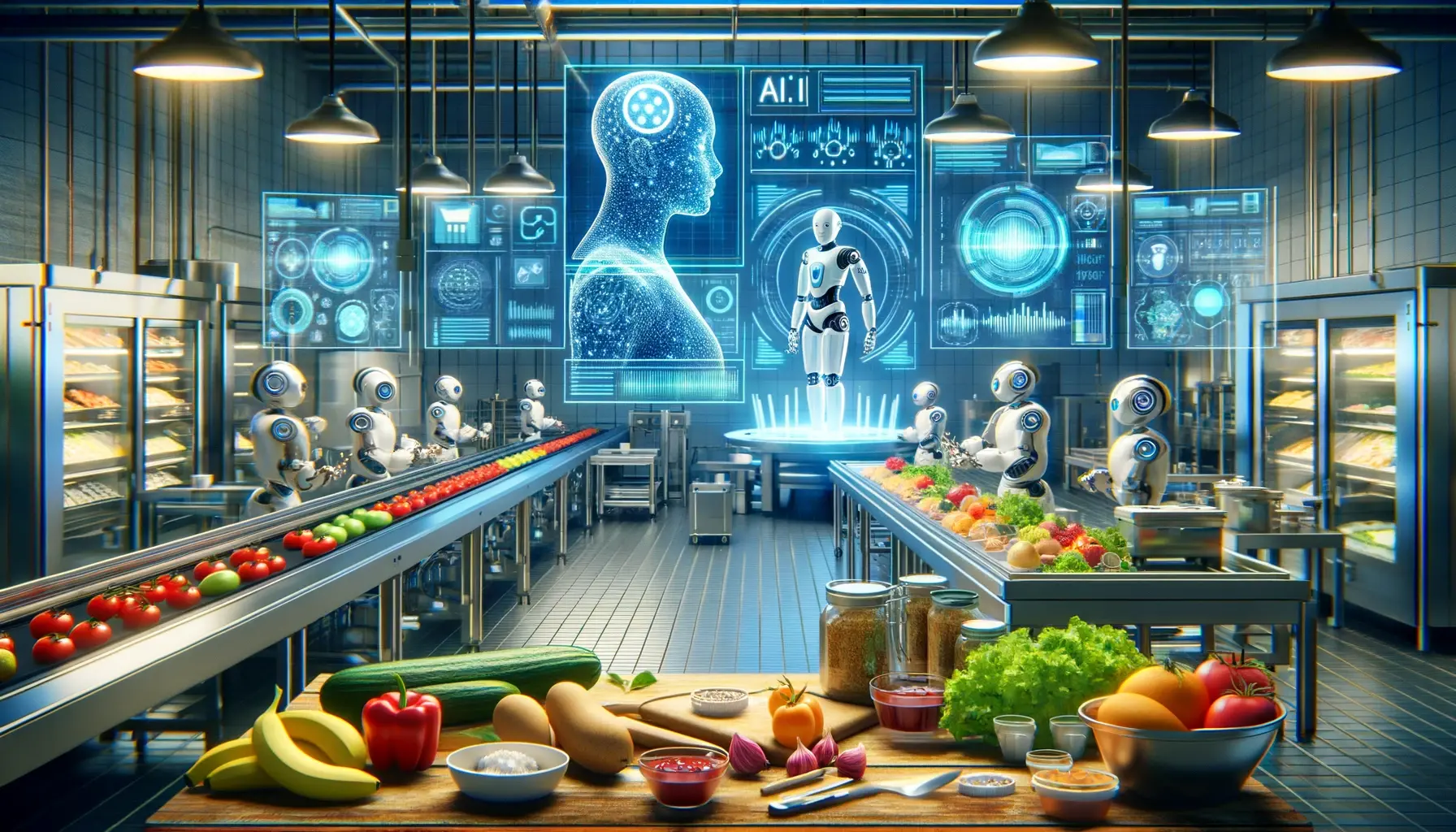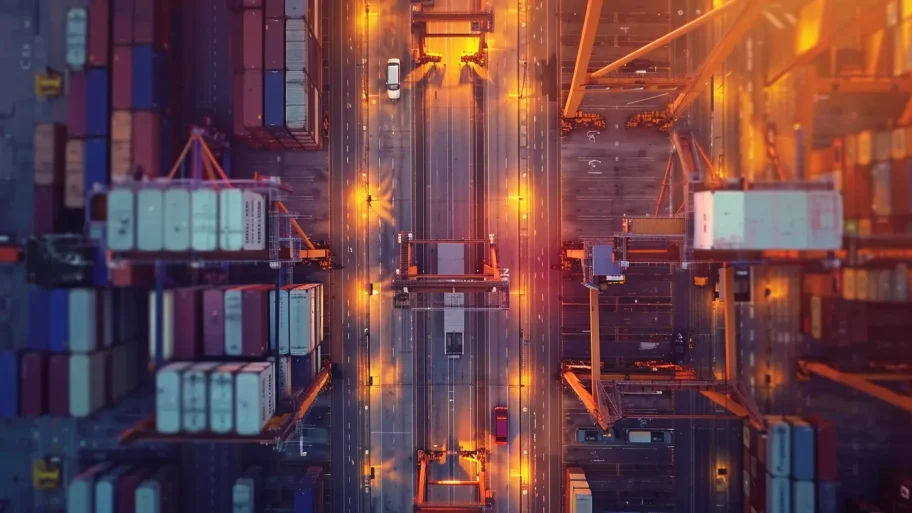Top 5 AI Use Cases In Food Quality Control
- By Matt

Attention Food Industry Professionals and Tech Enthusiasts!
Imagine a scenario where equipment failures are frequent, quality standards are inconsistent, and waste is piling up. These are not distant threats but imminent realities for those who fail to integrate AI into their food production strategies immediately.
In this article, we’ll reveal how AI can transform food production efficiency, helping you avoid these costly challenges.
Key Takeaways
- AI-driven predictive maintenance minimizes downtime and maximizes equipment lifespan.
- AI-enhanced quality control ensures consistent product standards and customer satisfaction.
- AI optimizes supply chain operations, reducing costs and improving efficiency.
- AI-based yield prediction improves planning and resource allocation.
- AI-powered food sorting enhances consistency and reduces waste.
Use Case #5: Transformative Food Sorting
Starting our countdown at number 5 is the transformative application of AI in food sorting, a critical process for maintaining consistency and reducing waste in food production.
The Stress of Inconsistent Food Quality
Inconsistent quality in food products can lead to dissatisfied customers and wasted resources. Sorting manually is time-consuming and prone to errors, impacting overall production efficiency.
This inconsistency adds stress to managing food production, making it difficult to maintain high standards and control costs.
Impacts of Poor Food Sorting
- Customer dissatisfaction
- Increased waste
- Higher operational costs
- Reduced production efficiency
How AI Enhances Food Sorting
AI-driven food sorting systems use sensors and cameras to evaluate products in real-time, sorting them by size, quality, and ripeness. This automated approach reduces human error and ensures uniformity.
Implementing AI for food sorting enhances product consistency, reduces waste, and boosts overall efficiency in food production.
Table 1: Key Benefits of AI-Powered Food Sorting
| Benefit | Description |
|---|---|
| Improved Consistency | Automated sorting ensures uniform product quality |
| Reduced Waste | Accurate sorting minimizes rejected products |
| Cost Savings | Less waste translates to lower costs |
| Increased Efficiency | Automation speeds up the sorting process |
Table 1 highlights the significant benefits of implementing AI-powered food sorting within food production facilities.
Revolutionizing Quality Control
AI-powered food sorting transforms the way quality is managed by leveraging advanced algorithms to ensure consistency and reduce waste. This approach minimizes errors and optimizes operational efficiency.
As AI technology continues to evolve, food sorting systems will become even more precise, further enhancing production efficiency and reducing costs.
Use Case #4: Yield Prediction Using AI
Using AI for yield prediction provides accurate forecasts, enabling better planning and resource allocation, which reduces waste and improves efficiency.
The Uncertainty of Yield Predictions
Inaccurate yield predictions can lead to significant issues in planning and resource management. Overproduction results in waste, while underproduction can lead to shortages and lost revenue.
This uncertainty in yield predictions adds stress to managing food production, impacting efficiency and profitability.
Challenges in Yield Prediction
- Inaccurate forecasts
- Resource misallocation
- Increased waste
- Lost revenue opportunities
AI-Driven Yield Prediction
AI leverages machine learning algorithms to analyze vast amounts of data, providing accurate yield forecasts. This enables better planning and resource allocation, reducing waste and improving efficiency.
Implementing AI for yield prediction ensures more reliable forecasts, optimizing production schedules and resource management.
Table 2: Key Benefits of AI-Driven Yield Prediction
| Benefit | Description |
|---|---|
| Accurate Forecasts | Reliable predictions based on comprehensive data analysis |
| Better Planning | Optimized production schedules and resource management |
| Reduced Waste | Minimized overproduction and associated costs |
| Improved Efficiency | Streamlined operations and resource use |
Table 2 outlines the benefits of AI-driven yield prediction for food production efficiency.
Maximizing Yield Accuracy
AI-driven yield prediction transforms the planning and resource allocation process by providing accurate forecasts, reducing waste, and improving efficiency. This technology ensures that production schedules are optimized, enhancing overall productivity and profitability.
As AI continues to advance, yield prediction models will become even more accurate, further reducing uncertainties and enhancing the efficiency of food production operations.
Use Case #3: Supply Chain Optimization with AI
Implementing AI in supply chain management optimizes procurement, logistics, and delivery, reducing costs and improving overall efficiency.
The Complexity of Supply Chain Management
Managing a food production supply chain involves numerous variables and complexities. Inefficiencies in any part of the supply chain can lead to delays, increased costs, and reduced overall efficiency.
This complexity adds stress to supply chain management, making it difficult to maintain smooth and cost-effective operations.
Challenges in Supply Chain Optimization
- Increased operational costs
- Delays in delivery
- Inefficient procurement processes
- Supply chain disruptions
AI-Enhanced Supply Chain Optimization
AI enhances supply chain management by analyzing vast amounts of data to optimize procurement, logistics, and delivery processes. This ensures that materials are sourced cost-effectively and products are delivered on time.
Implementing AI in supply chain operations reduces costs, improves efficiency, and minimizes the risk of disruptions.
Table 3: Key Benefits of AI-Enhanced Supply Chain Optimization
| Benefit | Description |
|---|---|
| Cost Reduction | Optimized procurement and logistics lower operational costs |
| Improved Efficiency | Smoother supply chain operations enhance overall efficiency |
| Timely Deliveries | Enhanced logistics ensure products are delivered on time |
| Risk Mitigation | Proactive management reduces the risk of supply chain disruptions |
Table 3 highlights the benefits of AI-enhanced supply chain optimization in food production.
Streamlining Supply Chain Management
AI-driven supply chain optimization addresses the complexities and inefficiencies in traditional supply chain management methods, ensuring smoother and more cost-effective operations.
As AI continues to evolve, supply chain processes will become even more streamlined, reducing costs and enhancing the overall efficiency of food production.
Use Case #2: Quality Control Transformation
Integrating AI into quality control processes ensures consistent product standards and compliance, enhancing customer satisfaction and operational efficiency.
The Challenge of Maintaining Consistent Quality
Inconsistent quality in food products can lead to dissatisfied customers and regulatory issues. Manual quality control processes are time-consuming and prone to errors, impacting overall production efficiency.
This inconsistency in quality control adds stress to managing food production, making it difficult to maintain high standards and control costs.
Impacts of Poor Quality Control
- Customer dissatisfaction
- Regulatory compliance issues
- Increased operational costs
- Reduced production efficiency
AI-Driven Quality Control
AI-driven quality control systems use advanced sensors and machine learning algorithms to monitor product quality in real-time. This ensures that any deviations are quickly identified and addressed, maintaining consistent standards.
Implementing AI for quality control improves product consistency, reduces costs, and enhances overall efficiency in food production.
Table 4: Key Benefits of AI-Driven Quality Control
| Benefit | Description |
|---|---|
| Improved Consistency | Real-time monitoring ensures uniform product quality |
| Regulatory Compliance | Automated systems help meet regulatory standards |
| Cost Savings | Reduced need for manual inspections lowers costs |
| Enhanced Efficiency | Automation speeds up quality control processes |
Table 4 outlines the benefits of AI-driven quality control in food production.
Optimizing Quality Control
AI-driven quality control ensures consistent product standards and regulatory compliance, reducing costs and enhancing overall efficiency in food production. This technology minimizes errors and streamlines quality control processes, ensuring high-quality products and customer satisfaction.
As AI continues to advance, quality control systems will become even more precise, further improving efficiency and reducing operational costs.
Use Case #1: Predictive Maintenance Revolution
Leveraging AI for predictive maintenance revolutionizes equipment reliability in food production facilities, minimizing downtime and maximizing equipment lifespan.
The Stress of Unpredictable Equipment Failures
Equipment failures can be unpredictable and disruptive, leading to operational downtime and increased repair costs. Managing these failures adds stress and complexity to food production operations.
Without a reliable maintenance strategy, equipment failures can cause significant disruptions, impacting efficiency and profitability.
Impacts of Unpredictable Equipment Failures
- Operational disruptions
- Increased repair costs
- Unexpected downtime
- Supply chain inefficiencies
How AI Enhances Equipment Reliability
AI-driven predictive maintenance uses sensors and historical data to forecast equipment failures before they occur. This proactive approach allows for scheduled maintenance, extending equipment lifespan and reducing repair costs.
Implementing AI for predictive maintenance enhances equipment reliability, minimizes downtime, and boosts overall efficiency in food production facilities.
Table 5: Key Benefits of Predictive Maintenance
| Benefit | Description |
|---|---|
| Reduced Downtime | Proactive maintenance prevents unexpected failures |
| Extended Equipment Lifespan | Timely interventions extend equipment life |
| Cost Savings | Reduced repair costs and avoided downtime expenses |
| Enhanced Productivity | Optimal equipment performance boosts productivity |
Table 5 highlights the significant benefits of implementing predictive maintenance in food production facilities.
Maximizing Maintenance Efficiency
Predictive maintenance transforms equipment reliability management by leveraging AI to forecast potential failures. This forward-looking approach minimizes unexpected breakdowns and optimizes operational efficiency.
As AI technology continues to advance, the predictive capabilities will become even more precise, further reducing downtime and enhancing the overall productivity of food production facilities.
Conclusion
In the rapidly evolving food production industry, inefficiencies, inconsistent quality, and rising costs threaten your business.
Failing to integrate these technologies means missing out on opportunities for increased efficiency, cost savings, and enhanced product quality.
Latest Posts
- By Matt | 1 year ago
- By Matt | 2 years ago
- By Matt | 2 years ago
- By Matt | 2 years ago
- By Matt | 2 years ago
- By Matt | 2 years ago
- By Matt | 2 years ago
There are no results matching your search
Trending
There are no results matching your search






